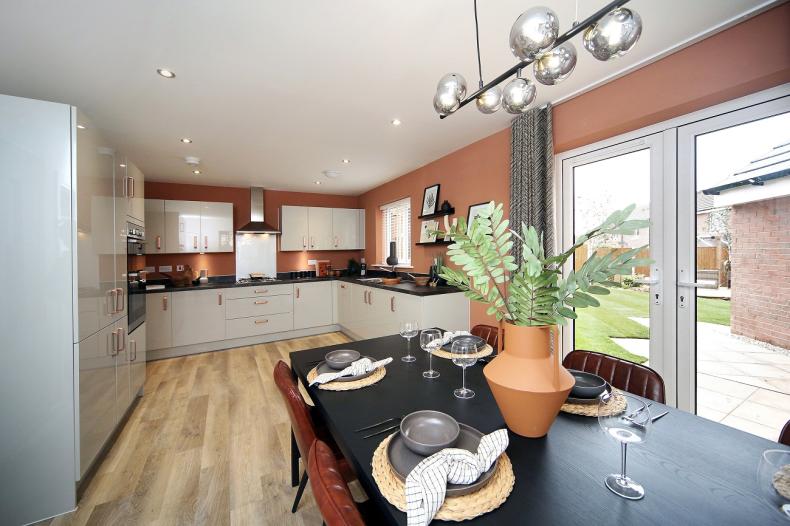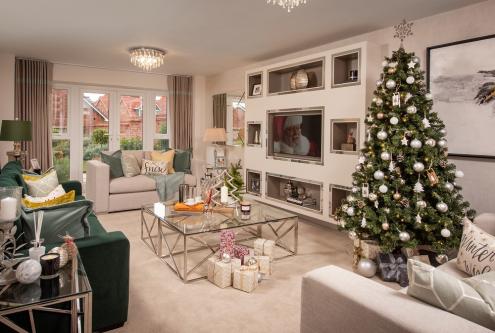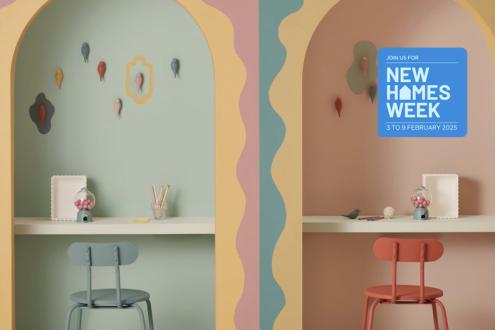07 October 2022
Interior design panellists share styling tips for first time buyers
There is nothing like the feeling of being handed the keys to your first home. Once moved in, what comes next for those new to the property ladder is the exciting prospect of stamping one’s own style on an entirely blank canvas and making the house a home.
But for many first-time buyers, home interiors may prove a challenge faced with the cost-of-living crisis. When searching for ways to maximise their interiors budget, where do new homeowners start? To help answer this question, we have assembled a panel of interior design experts from Claude Hooper, Clayton & Company and Edward Thomas Interiors to share their top tips and guidance for first-time buyers looking to style their homes.
While waiting to move into their new build home, what are some interior design do’s and don’ts for first time buyers?
Claude Hooper: If there are pieces of furniture you know you need, start looking. For bigger items like sofas, it’s advisable to try these out for comfort, and don’t forget to ask about delivery; sometimes they can have long lead times. So, plan ahead but don’t be tempted to order too much until you’ve moved in.
Clayton & Company: Think about different rooms and what furniture will work well in the space; this will act as the foundation for the rest of your home styling choices. Create digital mood boards of colour palettes and styles you admire. Before buying lots of furniture, wait until you’ve moved in and have gotten a feel for the spaces in your home and how you use them. For first time buyer homes, you’ll likely want to create multi-functional spaces so may need to make clever furniture choices.
Edward Thomas Interiors: Start scrolling social media. Instagram and TikTok are great resources for current interior trends and you can find plenty of home bloggers and influencers documenting their interior design journeys. Don’t panic buy! Just because there’s a sofa sale or a piece of furniture is half price doesn’t mean you should go for it. Take your time, start by gathering smaller essentials like utensils, crockery, cutlery, bed linen and towels.
How does a first time buyer know their style and find what’s right for them?
Clayton & Company: It often takes years to figure out your personal interior taste and, even then, it can (and does) change. Instagram and Pinterest are great places to start, as are interior retailer websites. These will have examples of how products look in the context of a room so are great for inspiration.
Edward Thomas Interiors: The average age of a first time buyer is now early thirties, so we would expect most people to have a good idea of their likes and dislikes even if they’re not sure how this translates to a home environment. Our advice is look everywhere, not just in other people’s homes but in hotels, bars, restaurants and shops, and you’ll soon find yourself naturally gravitating towards a style.
Claude Hooper: Use the internet and social media to generate a collection of looks and styles that appeal to you, then use these to create mood boards. Before you know it, you’ll have an idea of how you want to furnish your new home.
What should be the first thing first time buyers do in respect of interior design when they move in?
Edward Thomas Interiors: Focus on key rooms, places you’ll spend the most time like your bedroom and living room. Knowing you have sanctuaries for sleeping and relaxing will help take the pressure off. Kitchens, home offices, spare rooms and bathrooms can all follow.
Claude Hooper: Measure every room, and then measure again! Be confident you’re ordering the right sized items. Then prioritise the pieces you absolutely need, e.g. sofa, bed, and curtains or blinds.
Clayton & Company: Take time observing your new home and its strengths and weaknesses. For example, which rooms receive the most natural light? Are there any awkward pinch points? How spacious does each room feel? These seemingly small things are hugely important when it comes to how you decorate and furnish.
How can lighting be used around the home and kept on a budget?
Clayton & Company: Every room should have a main ceiling light, whether that’s a pendant, light fitting or downlights. To add more light, which is often a good idea for rooms which lack natural light, opt for table lamps, floor lamps or even a voile. All of these are available in high street stores. It’s also important to make sure you select the right light bulb, do you want warm or cold light? This information will be on the packet, so do read it!
Claude Hooper: Occasional lighting will instantly create a more homely feel, so consider easy fit pendants, side lamps and floor lamps for softer lighting around the home.
Edward Thomas Interiors: Lighting often gets overlooked. Good lighting helps a space feel bright and inviting, especially in rooms with fewer windows. Don’t just focus on ceiling light fittings, consider uplighters, wall lamps, recessed or cabinet lighting. They don’t have to be expensive, there are online and high street retailers with great options.
Where would you recommend first time buyers shop for bargains?
Claude Hooper: HomeSense, Argos and Homebase are good places to start, but look at Wayfair too.
Edward Thomas Interiors: Check out TK Maxx, Dunelm, Matalan and Zara Home as well as the bigger department stores like John Lewis, Debenhams and House of Fraser that have ranges to suit different budgets. Online retailers such as Wayfair and Made have excellent pieces and don’t forget the supermarket homeware departments either.
Clayton & Company: High street shops such as IKEA, Wayfair, HomeSense, Next Home, H&M Home have a good range. Start looking online, make a wish list and then visit the store to look at each piece before you purchase.
Tilia Homes’ sales and marketing director, Lizzie Burda, concluded: “Furnishing a blank canvas can be daunting and exciting in equal measure, but our experts unanimously advised not to rush but instead let your style evolve organically. They also collectively stressed the financial and environmental benefits of sourcing pre-loved furniture or upcycling as excellent alternatives for first time buyers who have put most of their funds into the deposit and need to make a budget stretch.
“It's important to help new homeowners understand where they can make savings, especially as government help for first time buyers, including the Help to Buy scheme, is due to close very soon.”
To find your new build home please view and visit our developments.






